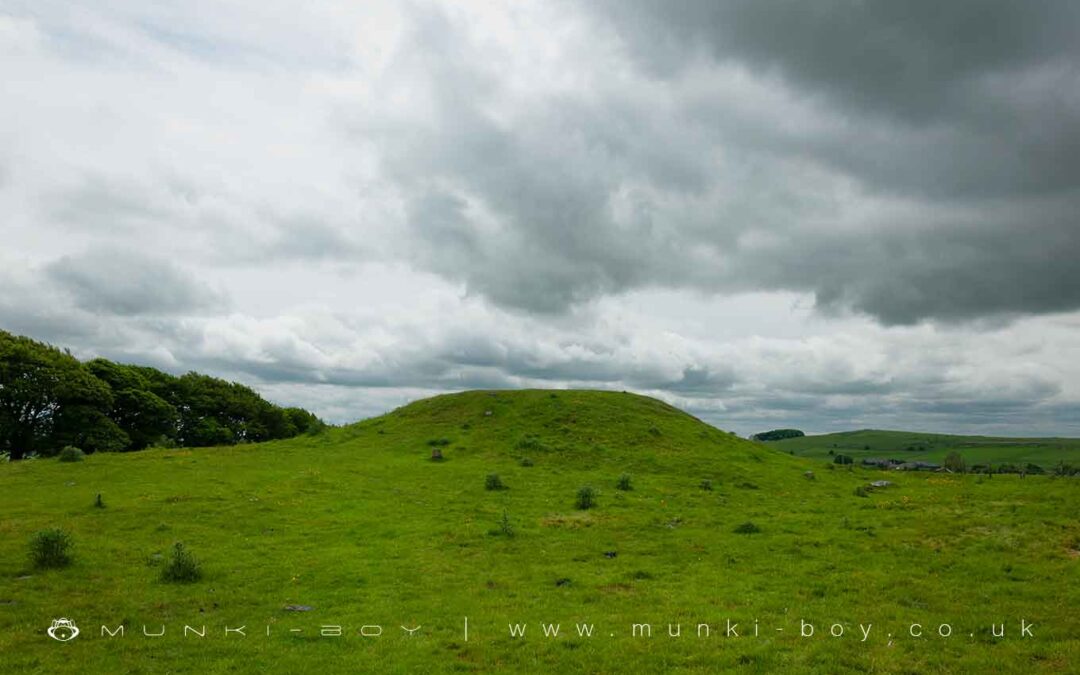Gib Hill Oval Barrow: A Portal to Neolithic and Bronze Age Rituals
Introduction to Gib Hill Oval Barrow
Gib Hill, located a mere 200 meters southwest of the renowned Arbor Low henge in Derbyshire, is a remarkable prehistoric site. It consists of an oval barrow, a type of funerary and ceremonial monument from the Early to Middle Neolithic periods, overlaid by a large bowl barrow from the Late Neolithic to Late Bronze Age. This layered structure serves as a physical timeline, revealing the evolving burial practices and ritualistic activities of ancient Britain.
Oval Barrow: A Neolithic Monument
The oval barrow at Gib Hill is a notable example of Neolithic earthworks. Characterized by its elliptical shape, it measures 27m by 46m and stands 2 meters high. The barrow’s orientation towards Arbor Low henge suggests a deliberate alignment, possibly indicating a broader ritual landscape. Typically, oval barrows were used for communal burials or individual interments beneath the mound, reflecting the burial customs of Britain’s early farming communities.
Archaeological Significance
Gib Hill’s oval barrow is particularly significant for its well-preserved state and the archaeological evidence it has yielded. Excavations have revealed underlying small barrow cemeteries predating the oval mound, indicating its importance as a ritual site over an extended period. The surrounding construction ditches, believed to be intact, potentially hold further archaeological insights.
The Bowl Barrow: A Later Overlay
Superimposed on the south-west end of the oval barrow is a large bowl barrow, a more common type of funerary monument dating from the Late Neolithic to the Late Bronze Age. This mound, roughly 24m by 27m in diameter and about 3 meters high, showcases the diversity in burial practices and beliefs of early prehistoric communities.
Discoveries and Excavations
Gib Hill has been subject to several partial excavations, notably by William Bateman and Samuel Mitchell in 1824, and Thomas Bateman in 1848. Findings include a smaller mound beneath the oval barrow with charcoal and cremated human remains, flint artifacts, and an iron brooch, indicating the later re-use of the barrow possibly in Roman or Anglian periods. Thomas Bateman’s findings of clay mounds with charcoal, wood, and ox bones under the oval barrow, and a square cist with a cremation and pottery vessel under the bowl barrow, further highlight the site’s extensive use over different eras.
State Protection and Heritage Value
Like Arbor Low, Gib Hill has been under State care since 1884, underscoring its national importance. As a rare oval barrow overlaid by a bowl barrow, it provides invaluable insights into the funerary rites, social organization, and ritual practices of Neolithic and Bronze Age communities.
Gib Hill’s complex archaeological layers make it an integral part of the rich prehistoric landscape surrounding Arbor Low. The site’s preservation allows for ongoing exploration into the depths of Britain’s early farming societies, making it an invaluable resource for understanding the deep-rooted traditions and customs of our ancestors.

